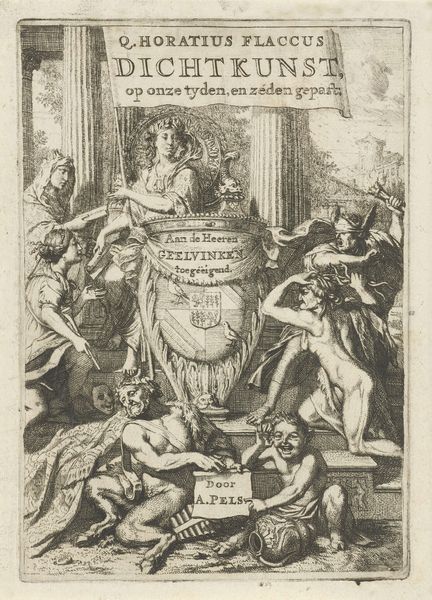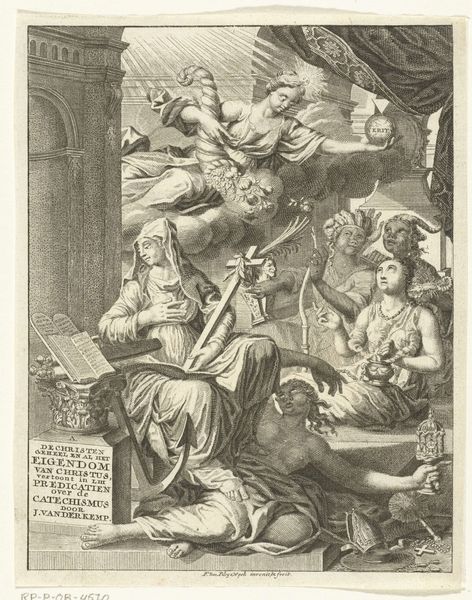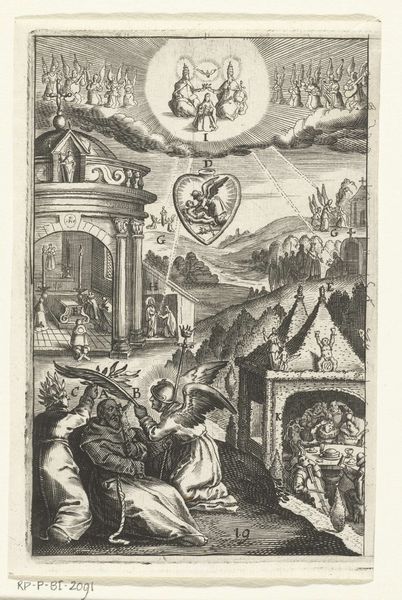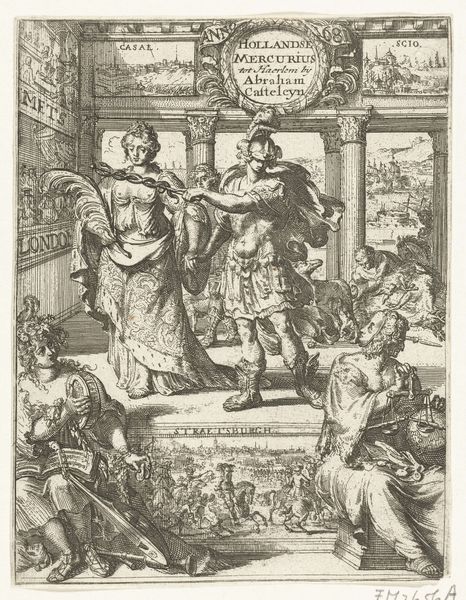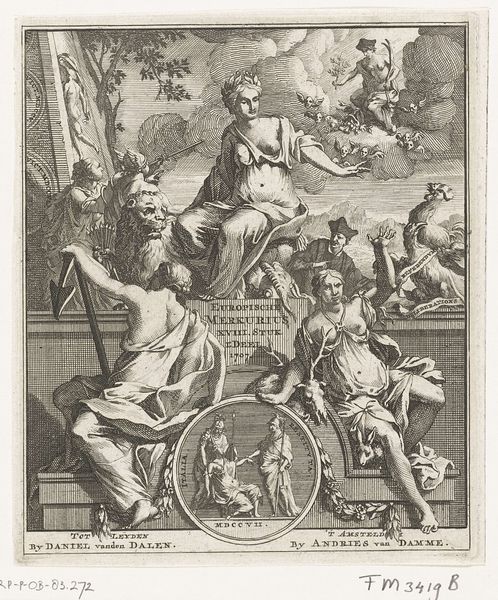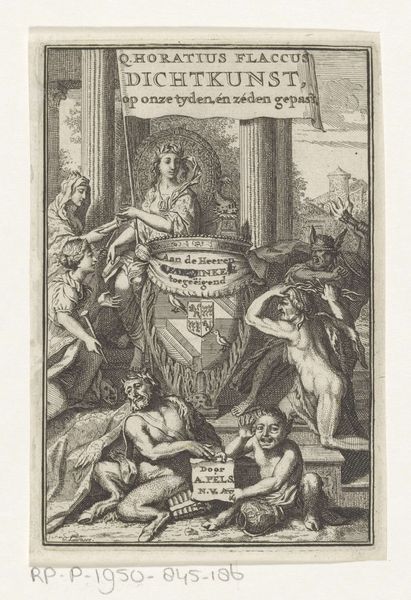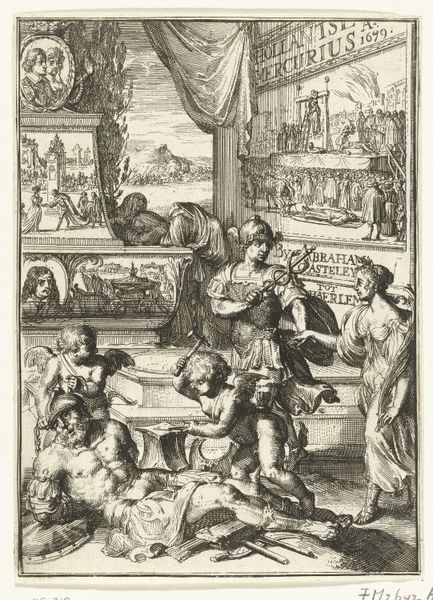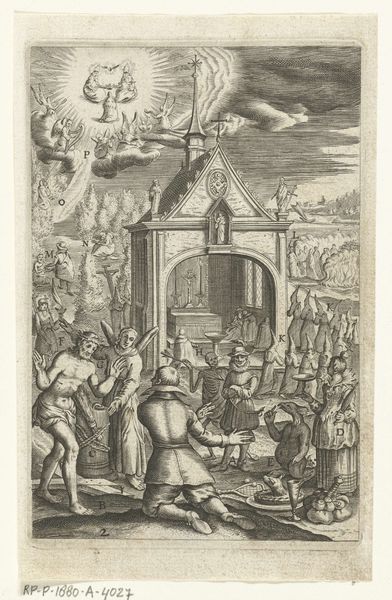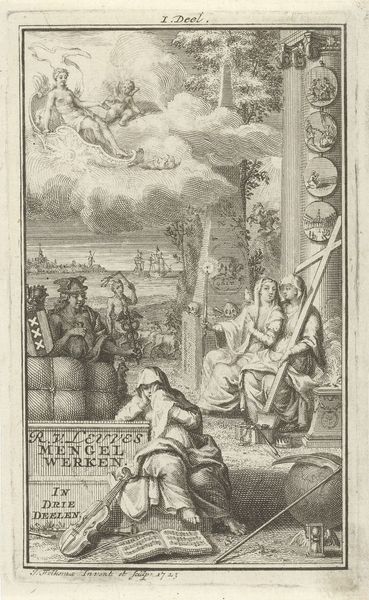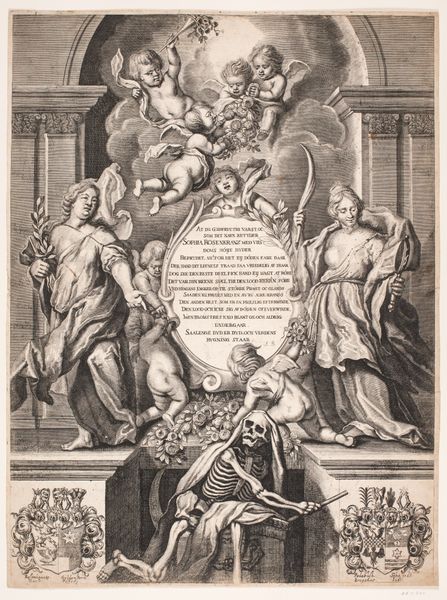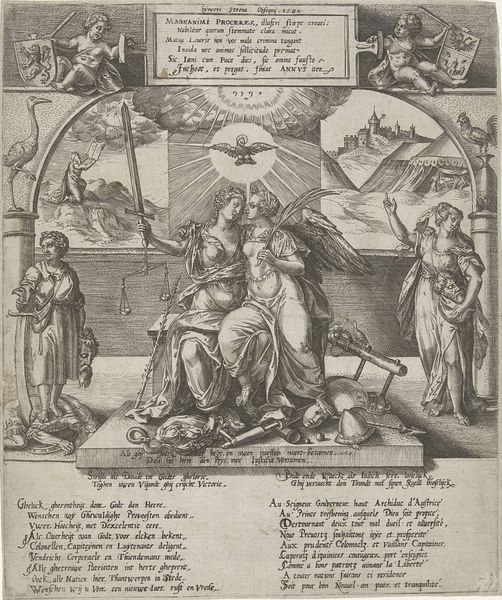
drawing, print, pen, engraving
#
drawing
#
allegory
#
baroque
#
pen drawing
# print
#
pen illustration
#
book
#
bird
#
pen
#
islamic-art
#
engraving
Dimensions: height 315 mm, width 201 mm
Copyright: Rijks Museum: Open Domain
Curator: This engraving from 1703, "Titelprent nieuwe testament" by Romeyn de Hooghe, showcases the Baroque style through intricate allegorical imagery related to the New Testament. It's currently held in the Rijksmuseum. Editor: Wow, what strikes me immediately is the incredible level of detail, especially in the textures. All those different surfaces - fabric, skin, paper, even the clouds – they're all rendered so meticulously with line and hatching. It almost feels tactile. Curator: The artist was celebrated for using printing technology as propaganda. Note the central position occupied by the New Testament and the printing press used in Amsterdam. These aspects certainly promoted Protestant beliefs to diverse readers during that era, right? Editor: Precisely. But I am also interested in de Hooghe's labour that creates this sense of mass appeal and wide access to texts through image production. The printmaking would allow multiple reproductions and distribution and this artwork acts to elevate book production itself. It's promoting both the Word and the technology facilitating its spread. Curator: A keen observation, indeed! Look how the scene is composed within an elaborate architectural frame filled with religious symbols such as Jesus and cherubic figures. Considering Amsterdam’s tolerance and relatively open marketplace of ideas, this imagery played an interesting role. The image is both informative and persuasive. Editor: Absolutely. And I see the very overt depictions of human figures surrounding the image. We get the spectrum: an old bearded scholar to the allegorical depiction of the earthly world by that goddess figure. There is an inclusion for the worldliness of print production. Curator: These Baroque prints held immense socio-political value; they informed and unified large audiences using striking iconography, thus solidifying religious sentiment at a particular period. The book truly takes center stage within public imagination with this work. Editor: Indeed! De Hooghe’s piece exemplifies the tangible labor embedded into its cultural framework. It reminds us how techniques shape consumption—quite an intriguing connection!
Comments
No comments
Be the first to comment and join the conversation on the ultimate creative platform.

